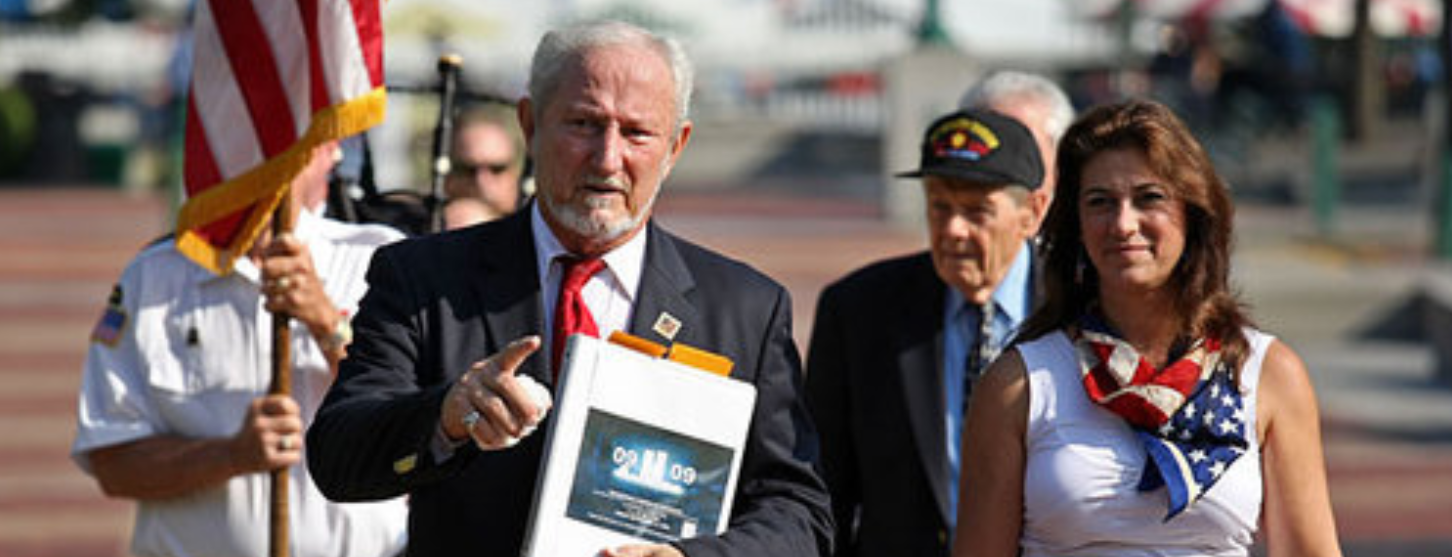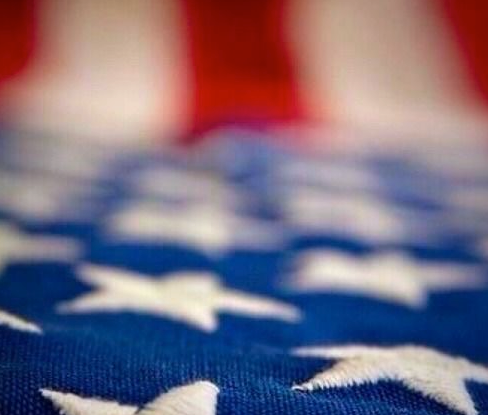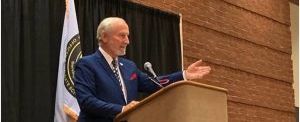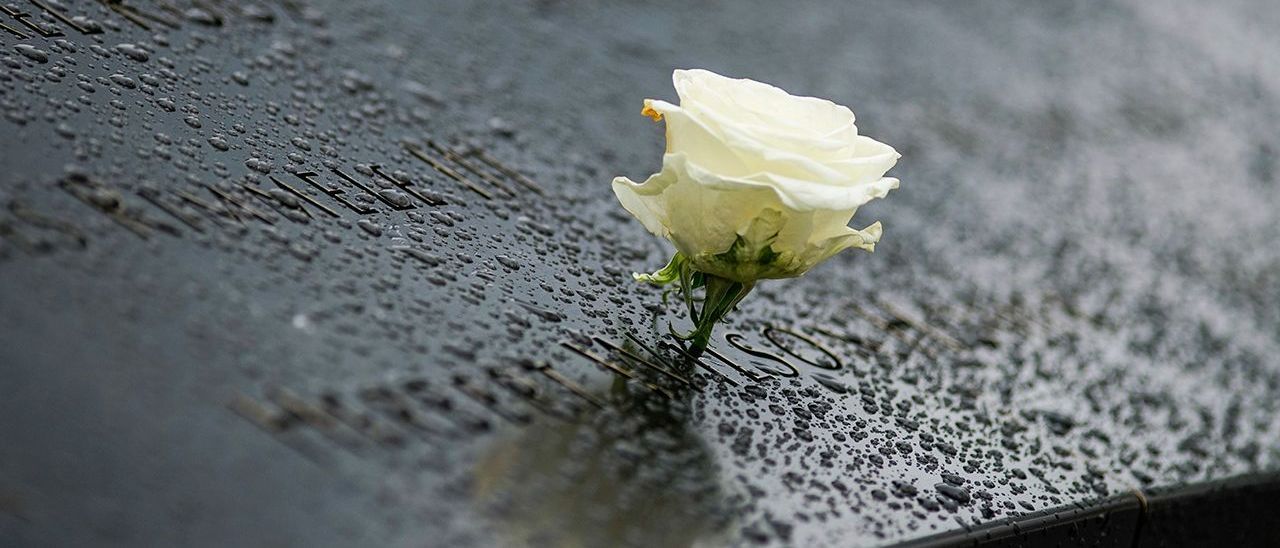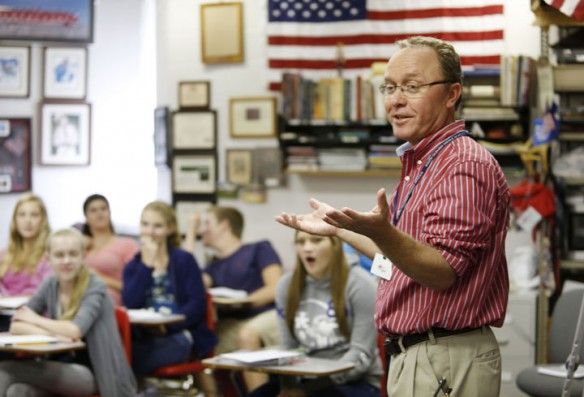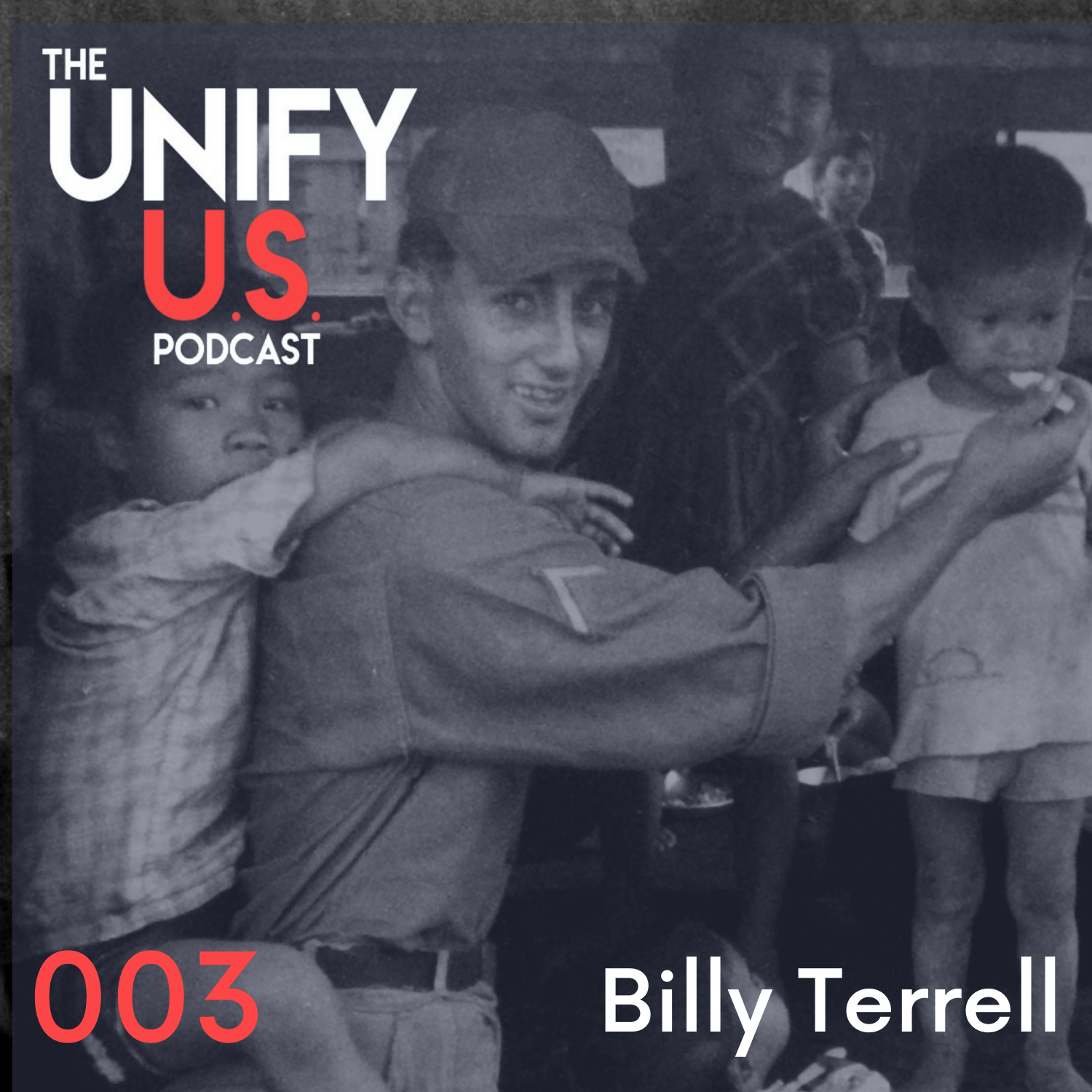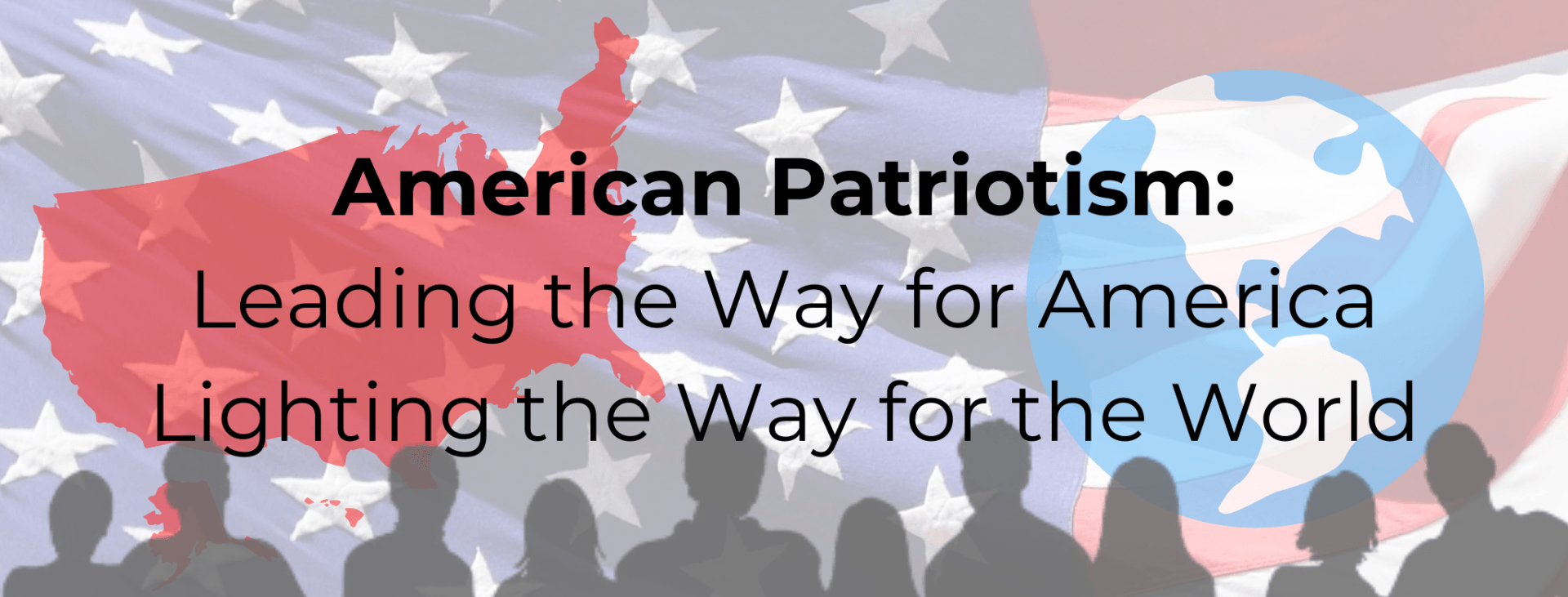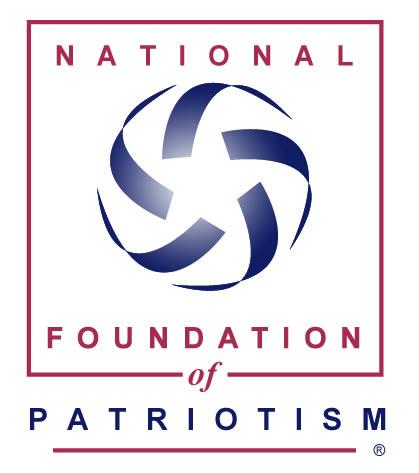The Greatest Friend I Never Knew
On a clear, blue Tuesday morning, as the sun rose to shine on the New York skyline, America was about to see her last days of peace and the perceived security we once enjoyed.
What most of us were about to find out that we had heroes all around us, many about to lose their lives. One of the leading unsung heroes of the terror attack on the World Trade Center was Rick Rescorla, Vice President of Security for Morgan Stanley, in the South Tower. He would later be credited with saving over 2977 lives that day. As he went in for a final sweep to see if anyone else was still in the building, the South tower began to collapse on him and those who couldn’t make it out that morning. Their remains are still enshrined in the rubble that is now beneath the Freedom Tower.
In the car, on the way to his Atlanta office, Nick Snider was called by his assistant, that the North Tower of the World Trade Center had been struck by a commercial aircraft, he raced to his son’s nearby home, and asked him to turn on the television and see what happened in New York. Within minutes they watched the second plane strike the South Tower. Unbeknownst to Nick at the time, a classmate from Officer Candidate School class of 4-65 was about to lose his life protecting thousands of others.
Nick never met Rick Rescorla while at Fort Benning, but he was about to realize their connection as the news started to spread throughout the world. Mutual friends would rekindle old relationships as they learned of the fate of a fellow officer from decades ago. Nick watched in shock and anger at the attack. And later was amazed by the emerging stories of Rick’s heroic efforts; not only on that fateful day, but of years prior. Rick Rescorla was referred to as the unsung hero of 9-11.
After the first terror attack on the World Trade Center, in 1993, Rick Rescorla devised an evacuation plan in preparation of future attacks, which he was sure would come. The drills were treacherous on the employees of Morgan Stanley in the South Tower, but in 2001 Rick led over 2900 employees safely out of the burning building.
Before he left his office, he made 2 calls; one to his wife and the other to his best friend Dan Hill. They watched in horror as the unbelievable images of the towers collapsed and entombed him. An epic end to his magnificent life of valor and heroism.
Nick watched too, 870 miles away, and was soon alerted by his OCS buddies, that a member of their class 4-65 was killed in the attack. Nick would soon plan a memorial in honor of his fallen comrade sponsored by the OCS Classmates. They built a multimedia exhibit of the events of Rick’s life complete with video interviews created years prior to his untimely death. Videos that captured Rick’s brilliant insight and even foresight of future events.
Nick was also instrumental in raising funds for the Rick Rescorla exhibit that now stands at the Infantry Museum at Fort Benning, GA. Nick hosted public readings of the names of the victims of the World Trade Center terror attack, at Centennial Olympic Park in downtown Atlanta until they no longer allowed it in 2010.
In March 2019 Nick felt compelled by God to guide the NFOP staff to begin an exhaustive effort to get Rick Rescorla the Presidential recognition he deserves.
President Trump agreed to award Rick Rescorla the well-deserved and long overdue Presidential Citizens Medal. This honor which is bestowed by the President of the United States, is awarded for “Exemplary deeds or services, for his or her country or fellow citizens.”
On November 7, 2019 Nick, his staff, his family, Rick’s family and 200 guests were in attendance in the East Room at the White House when Rick finally received a Presidential “thank you” from President Donald J. Trump. After the ceremony, the NFOP hosted the “Honoring the Life and Legacy of Rick Rescorla Dinner” in a Washington DC ballroom. All in attendance were invited.
The new One World Trade Center, which is the main building on the complex in Lower Manhattan, New York City. It is the tallest building in the U.S., the Western Hemisphere, and the seventh tallest building in the world. Whenever Nick sees the Freedom Tower, he remembers the dear friend, he never knew and he is full of pride and gratitude as a member of OCS Class 4-65. Nick and Rick share another honor together; both members of the OCS Hall of Fame.
Written and compiled by Pat Stansbury
Recent Posts
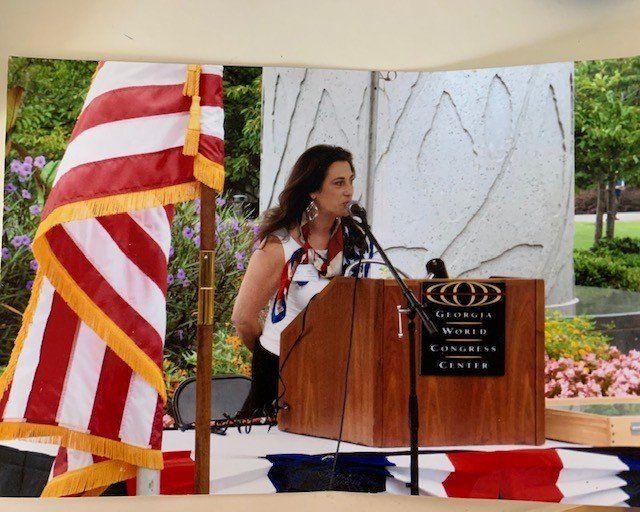
Leadership is an action, not a position. Non-profit organizations, by the very nature of the business, require passionate, dedicated leadership to develop and maintain sustainable growth. Especially when times get tough, creative leaders who are passionate about their missions, learn how to chart new courses. Aim to meet the goals of the mission in unique new ways, rather than struggle over things that no longer work. If the mission is important, then the methods for sustainability will appear through action. It is imperative for a struggling nonprofit to keep strong connections and build on relationships, especially in transition periods. On average, museums receive less than 25% of their funding from government sources, that means the rest must come from public and private sources. Many museums have closed since the downturn of 2008 and more are at risk due to Covid-19 restrictions than ever in recent history. “The scattered fate of closed museums rest in pieces in cities across America, and sadly, what is often preserved is not the identity of the museum, but the shadow of its memory in scattered objects and archived names.” Said Allison Meier, in her 2013 article for Hyperallergic, an online publication that supports the arts. Passion matters. Do people really care about the benefit of museums in their communities anymore? According to the American Alliance of Museums: · 97% of Americans believe museums are educational assets. · 89% of Americans believe museums provide economic benefits to their communities. · 96% of Americans say they would support legislative actions to help support museums. · 96% of Americans say they want to maintain or increase federal funding of museums. Museum and other nonprofit directors must find ways to keep their businesses alive through these turbulent times. Directors are people and they get weary, discouraged and overwhelmed just like the rest of us. In 2008, the National Museum of Patriotism faced crushing financial realities after the 2008 economic downturn greatly diminished the funds of its major donor base in Atlanta. Great leaders think on their feet, are flexible, they are realists and they are decision makers. Founder Nick Snider, passionate about the mission that drove him to donate his own funds in starting the organization in 1996, had a serious dilemma to face and no time to waste in dealing with it. In 2010, just one year after moving to a new location, Nick made the crucial decision to close the facility, and create an online museum. The National Foundation of Patriotism was formed and the physical exhibits were photographed, archived and later dispersed. Some were donated to other museums, good for the industry. Some were auctioned and bought by people on patriotic missions, good for America. And some were preserved for future traveling exhibits. It was a tough decision, but it was the right one at the right time. With 12,000 members in tow, Snider created a new web and social presence that grew to a fan base in 2020 of over 350,000 engaged friends. The decision cut the $100,000 monthly budget to $12,000. And the mission of the National Foundation of Patriotism has enjoyed robust growth. In an effort to support and encourage other nonprofit organizations, here is the National Foundation of Patriotism’s top 10 success strategies for nonprofit leaders. 1. Start public speaking. Sharing your vision actually strengthens and reinvigorates YOUR passion! Whenever possible, speak to people in person. You’ll feel their energy and benefit from their support. 2. Make appointments to see your donors. Meet with them, share how you are adjusting to a new strategy, let them know this is not a fundraising call, but the next one will be. Stay connected to major donors with gratitude and remind them that their donations mattered and are not lost. Be specific about how those dollars have undergirded the mission and created a sustainable product that will be launched in a new way. 3. BE HONEST. With your donors, and with yourself. YOU didn’t fail, the economy did, but you have a plan. Focus on the truth, focus on the reality that you are facing, and give yourself a little breathing room to develop a new strategy. 4. Get Social. Dive deep into online options to reach people with your mission first (what we do), the meaning second (why we do it), and your method for sustainable growth third. 5. Hire a transition team. Even if you have to fire your entire organization, you need these 3 to help keep you refreshed, resourceful, and available. a. A Web designer b. A Social Media Content Manager c. An assistant to help with details of the transition 6. Engage your volunteers. Host appreciation luncheons, and encourage them to take part in the transition. 7. Engage in projects that help or support other people and organizations. It keeps you in the right place in the public eye and opens you to a wide range of diverse new friends and supporters. 8. Invite young college students to a planning and brainstorming meeting that can generate ideas and enable them to get excited about your mission. If you FEED them, they will come! ALWAYS FEED THEM. 9. Get ruthless with your daily schedule. Start as many days as possible by what I call Breakfast with Champions. Meet with successful people and invite them to tell you all about how they reached their goals. YOU EAT, THEY TALK, YOU LISTEN! 10. Block off time each day to think. Close your door, turn off your phone, turn out the lights and just let your mind flow where ever it wants to go. Eventually, you’ll settle on what matters and then you’ll strike gold. That great idea, that winning strategy, that path to success. The National Foundation of Patriotism wishes you all the best. You matter. Your organization matters. Don’t ever give up. God bless you, and may God continue to bless America!

Puritan Spiritual Advisor, Religious Reformer, Midwife and mother of 11 children. A key figure in the history of religious freedom in England’s American colonies and the history of women in ministry who challenged the authority of the ministers. Anne Hutchinson was born in Alford, Lincolnshire, England, and was the daughter of Francis Marbury, an Anglican cleric and school teacher, who gave her a far superior education than that of most other girls of her day. She resided in London as a young adult, while there, she married William Hutchinson (1586- 1641), he was a judge (chief magistrate) in the Colonial era settlement at Portsmouth on the Island of Aquidneck, which is now known as Rhode Island. The couple moved back to Alford, Lincolnshire and began following preacher John Cotton. Cotton was compelled to emigrate to the New World in 1633, and the Hutchinson’s and their 11 children followed him shortly thereafter. Soon they became well established in the growing settlement of Boston in New England. Anne Hutchinson became a Midwife and was helpful to the women needing her assistance, as well as forthcoming with her personal religious understandings. She began hosting a weekly meeting in her house to deliver sermons and teaching the women about Christianity. She became so popular even men started joining her meetings, including Henry Vane, the young governor of the colony. It wasn’t long before her reformation teachings started ruffling the feathers of the male religious leaders of the day. Her strong religious convictions and intense delivery shook the established Puritan clergy to the core. Her obvious intellectual acumen, as well as her popularity and charisma, created a deep divide that threatened to destroy the Puritans’ religious community in New England. She began to accuse the local ministers (except Cotton and her husband’s brother-in-law John Wheelwright) of preaching a covenant of “works” rather than a covenant of “grace”. Many of the ministers began to complain about her increasingly blatant accusations, as well as certain unorthodox theological teachings, according to them. The grumbling eventually erupted into what is commonly called the Antinomian Controversy, culminating in her trial, conviction and banishment from the colony. Followed by a church trial, in March 1638, in which she was put out of her congregation. Tried, Convicted and Banished! She was eventually tried and convicted, then banished from the colony with many of her supporters. Hutchinson and many of her supporters established a settlement of Portsmouth with encouragement from Providence Plantations founder Roger Williams in what became the Colony of Rhode Island and Providence Plantations. After her husband’s death a few years later, in 1641, threats of Massachusetts taking over Rhode Island compelled Hutchinson to move totally outside the reach of Boston into the lands of the Dutch. Five of her older surviving children remained in New England, while she settled with her younger children near an ancient landmark, Split Rock, in what later became The Bronx in New York city. Tensions were high during the Kieft’s War with the Siwanoy Indian tribe, and in August 1643 Hutchinson, her 6 children and other members of the household were massacred by the Siwanoys. The only survivor Susanna (Hutchinson) Cole The only survivor being her nine-year-old daughter Susanna, who was taken captive. There are two accounts of her salvation, one was that she had red hair, and that spared her from slaughter, and the other is that she was picking blueberries some distance from the house and hid in the crevice at Split Rock. Either way, she was taken captive and held for several years. Sources say she had a son while in captivity to Siwanoy sachem Wampage I. Believed to be her mothers’ murderer. The child Ninham-Wampage would later become known as Wampage II. She would eventually marry John Cole in Boston on December 30, 1651. John Cole was the son of a Boston innkeeper Samuel Cole, who is credited with establishing the first tavern in 1634. Anne Hutchinson is honored by Massachusetts with a State House monument calling her a “courageous exponent of civil liberty and religious toleration” Often referred to as the “most famous – or infamous – English woman in colonial American history.


